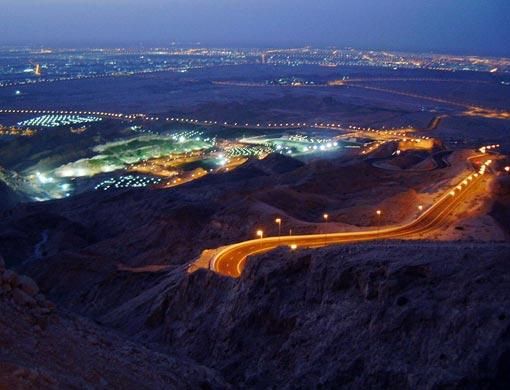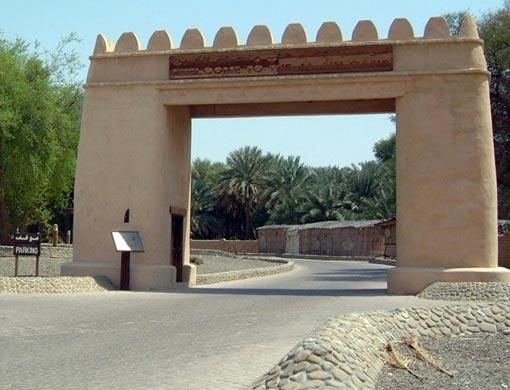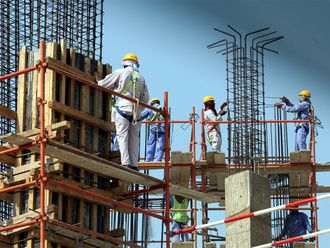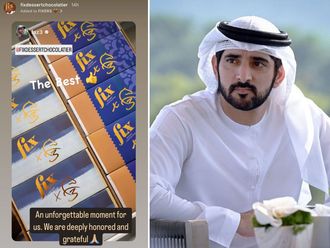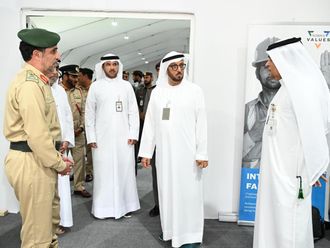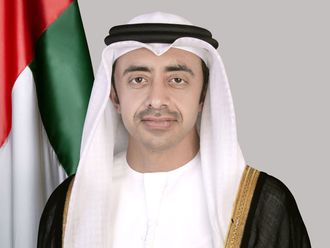Al Ain: Government spending billions to boost facilities in Al Ain as the city becomes increasingly popular with tourists.
Fast-track development has seen Al Ain grow swiftly from just a cluster of small villages to a well-planned, modern city that is at the forefront of a social and economic revolution.
The beauty of Al Ain and its surroundings are being dressed up in new revelry, as the government invests billions of dirhams in a variety of development projects.
Al Ain has long been known as the "Oasis City" because of its trees and lush green vegetation. The seeds of a green revolution were sown by the late Shaikh Zayed Bin Sultan Al Nahyan in the early 1960s, when he was the Ruler's Representative in the Eastern Region of Abu Dhabi emirate.
Now a burgeoning city, Al Ain has become a popular tourist destination, thanks to its rich Arabian heritage. Located amongst a sea of sand dunes on the border with Oman, Al Ain is home to a Bedouin civilisation that lies at the very core of UAE culture.
The discovery of archaeological relics has also made the city a key historical site on the Arabian Peninsula.
Archaeologists say that a thriving, modern civilisation called the area home during the Stone and Bronze Ages. Evidence of this people's ingenuity, arts and crafts continue to be unearthed, providing a fascinating glimpse into the lives of the ancient inhabitants of the oasis.
Several of the city's attractions would have been as familiar to those people as they are to Al Ain residents now. These include Jebel Hafeet, the highest mountain in the emirate, historic date palm oases, animal souqs and the world's oldest aflaj, an ancient underground irrigation system.
Hopefully, the Bedouins would be pleased by the more recent additions to the scenery. Today, Al Ain boasts a large number of public gardens, the biggest zoo in the country, the National Museum, UAE University, and camel- and dog-racing tracks.
Hili Archaeology Park, remains of human settlements that date back to the Stone and Bronze Ages of 5,000 BC, and remains of a huge ancient cemetery in the foothills of Jebel Hafeet that are dating back to 3,200 to 3,000 BC are two main attraction for tourists. One of the most impressive monuments in the UAE is Hili Grand Tomb, which is more than 4,000 years old. This tomb, which was discovered in 1960s, is located in the middle of the park. Al Ain city is also home to the Al Jahili Fort, built in 1898.
The city also has an attractive combination of greenery, deserts and mountains, natural hot water springs, and malls, shopping centres, and other facilities available in any modern city. Each of its features is capable of giving a distinct place among the other cities in the UAE and GCC countries. One of its most lauded features is environment that is free of humidity that affects the other big cities in the emirates.
Future plans
Many construction projects are either currently under implementation or different phases of planning and are closely monitored by the authorities. According to Ahmad Rashid Al Darmaki, head of project implementation and management at Al Ain Municipality, project worth Dh7.7 billion have been planned for the city.
Many of these projects, worth Dh3.2 billion, are currently in the implementation phase, while projects worth Dh4.5 billion. The projects include construction of new roads and other facilities including a complete revamping of the city's town centre.
Awad Bin Hasoom Al Darmaki, General Manager of Al Ain Municipality, said the development of the town centre would make Al Ain a pedestrian-friendly city. The project will streamline vehicular traffic in the city along with providing 450 parking lots to serve the shops and the public.
An area of 3,000 square metres would be developed under the project. Some 25 rest areas would be constructed the downtown area that would able to accommodate some 600 people. The downtown area will also be decorated with paintings, safety barriers, and other ornamental items to present an attractive and beautiful look.


